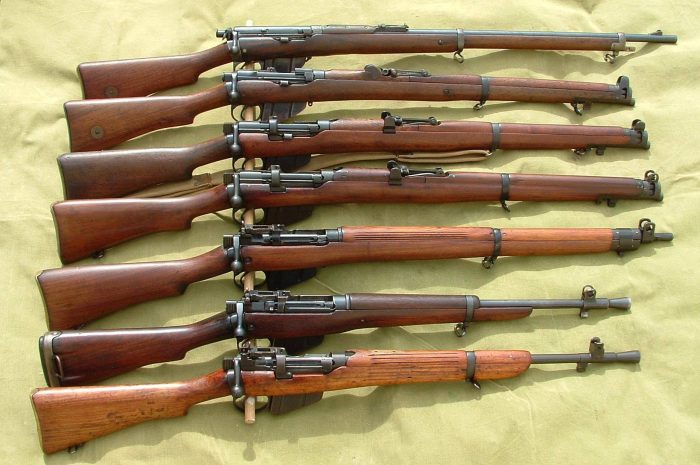


It’s for this reason that Lee-Enfields continue to show up in the hands of Taliban fighters, often as a sniper rifle. In the 1980s, the United States funnelled massive shipments of antique Lee-Enfields to Afghanistan for use by Mujahedeen fighters against the Soviet Union. Bangladeshis used them to gain independence from Pakistan. They were among the mish-mash of guns that Israelis used to fend off Arab armies in 1948. Lee-Enfields were wielded by IRA terrorists in The Troubles. Photo by Pamela Roth/Edmonton Sun/QMI Agency Canadian Ranger Ernestine Karlik armed with a Lee-Enfield in 2014. With thousands of the rifles turned over to the surplus market after the Second World War, they were soon making cameo appearances in dozens of conflicts, skirmishes and civil wars. Of the more than 118,000 Canadians who have been killed in foreign wars, most would have been issued a Lee-Enfield.Īlthough Brits stopped using the Lee-Enfield right around the time they dissolved the Empire, the Lee-Enfield became the English-speaking world’s version of the ubiquitous Soviet-made AK-47. However, the Ross was so prone to malfunction that Canadians were soon scavenging Lee-Enfields from dead British soldiers.įrom then on, the Lee-Enfield remained the weapon of choice for Canadian soldiers right up until the 1950s. When the First World War broke out, Canadians initially went into battle carrying the Canadian-made Ross Rifle. The more familiar short-muzzled Lee-Enfield came out in 1904. Photo by Library and Archives CanadaĬanadian militias first picked up an early version of the Lee-Enfield in 1896 and Canadian volunteers would carry them in the Boer War. Two First World War Canadian soldiers wearing gas masks examining a Lee-Enfield rifle. “It has been used in every conceivable theatre of war … and its high build quality and tough construction made it all but indestructible,” wrote the historian Martin Pegler in a book about the Lee-Enfield.Īnd while it can’t shoot as fast as modern automatic rifles, a well-trained British soldier could fire and reload quick enough to squeeze off 30 rounds per minute from a Lee-Enfield. Given that this was the height of the British Empire, the gun was soon being used to arm troops in virtually every corner of the globe. The Lee-Enfield was developed as a standard-issue British infantry weapon at the close of the 19th century. Photo by Photo by Mark Large - Pool/Getty Images “It might seem old-fashioned … (but) the retention of the Lee-Enfield by the Canadian Rangers was a wise choice for their role and environment.” In this 2016 photo from Whitehorse, Yukon, Prince William, Duke of Cambridge is greeted by Canadian Rangers and Junior Rangers carrying Lee-Enfields. “The more complicated a rifle gets … the more prone you are to problems with parts breaking or jamming in a harsh environment,” said Eric Fernberg, an arms collection specialist at the Canadian War Museum. This advertisement has not loaded yet, but your article continues below. This makes for slower firing, but it also leaves the Lee-Enfield with as few moving parts as possible. The rifle is also bolt-action, meaning that every shot must be manually pushed into place by the shooter. Its wood stock makes it uniquely resistant to cracking or splitting in extreme cold. 303 cartridge was famous for killing enemy soldiers with one shot, and it’s equally good at stopping a charging polar bear. Rather, it’s because it’s still one of the best guns to carry above the tree line. Unlike many other antique items in the Canadian military, the Lee-Enfield didn’t hang on for so long out of apathy or tight budgets. Since 1947 the Lee-Enfield has remained the main service weapon of the Canadian Rangers, a part-time force mainly devoted to Arctic patrols. This week, the Canadian Rangers began replacement of their Lee-Enfields with the specially commissioned Colt Canada C19. Article content They even put the gun on their official badge.


 0 kommentar(er)
0 kommentar(er)
